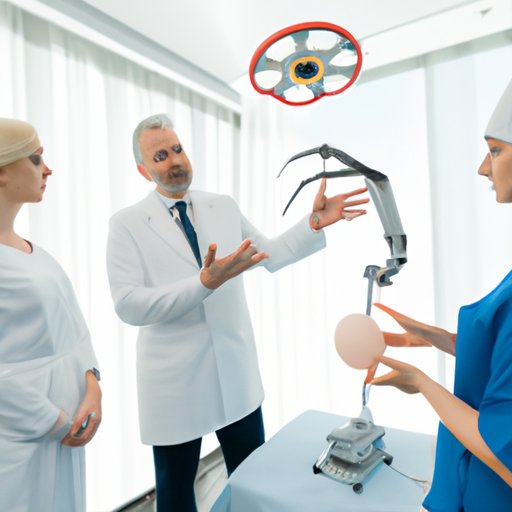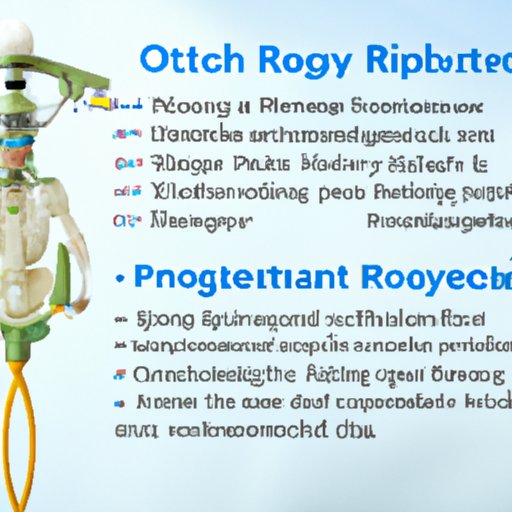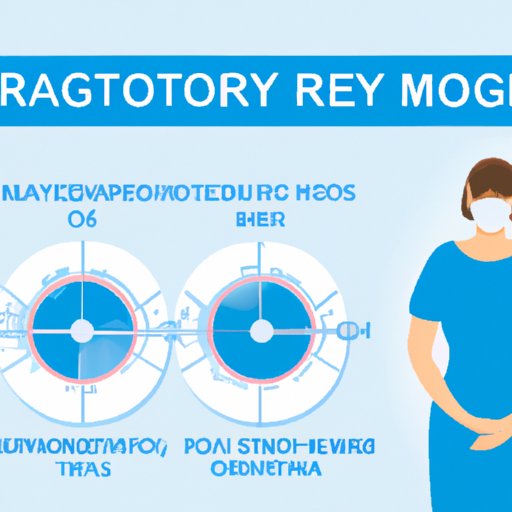Introduction
A robotic hysterectomy is a type of minimally invasive surgery used to remove a woman’s uterus. The procedure is performed using a robot that allows the surgeon to have greater precision and control than with traditional open or laparoscopic hysterectomies. This article will provide an overview of what to expect before, during, and after a robotic hysterectomy, including tips for preparing for surgery, recovery timeline, common symptoms, pain management, benefits, and long-term effects.

Explaining the Robotic Hysterectomy Procedure and Recovery Process
The robotic hysterectomy procedure is typically done as an outpatient procedure, meaning the patient does not need to stay in the hospital overnight. During the procedure, the surgeon makes small incisions in the abdomen and inserts a camera and robotic arms to perform the surgery. Depending on the individual needs of the patient, the surgeon may also remove the ovaries and fallopian tubes. Once the procedure is complete, the incisions are closed and the patient is monitored for any complications.
It is important for patients to prepare for their robotic hysterectomy in order to ensure a successful outcome. Patients should discuss any medications they are taking with their doctor and make arrangements for someone to drive them home after the procedure. They should also be prepared to rest and take it easy for the first few days after the surgery.
The recovery timeline varies from person to person, but most people can expect to feel some discomfort and fatigue for the first few days after the procedure. Patients may also experience some bleeding and cramping, which is normal. Most people are able to return to their normal activities within two weeks after the procedure.
Common Symptoms After a Robotic Hysterectomy
After a robotic hysterectomy, patients may experience a variety of symptoms. Pain is common, as is bleeding and cramping. Nausea and fatigue are also common side effects of the surgery. It is important to remember that these symptoms are normal and should improve over time.

Tips for Managing Pain after a Robotic Hysterectomy
It is important to take steps to manage pain after a robotic hysterectomy. Over-the-counter medications such as ibuprofen or acetaminophen can help to reduce pain and inflammation. Resting and avoiding strenuous activity can also help to manage pain. Relaxation techniques such as meditation or yoga can also be beneficial.

Benefits of a Robotic Hysterectomy
Robotic hysterectomy offers many benefits over traditional open or laparoscopic hysterectomies. According to a study published in the International Urogynecology Journal, “Robotic hysterectomy provides excellent outcomes with shorter hospital stays and quicker return to normal activities” (Song et al., 2018). Additionally, robotic hysterectomy is associated with a lower risk of complications and is less invasive than other types of hysterectomy.
Long-Term Effects of Robotic Hysterectomy
Although robotic hysterectomy is generally safe and effective, there are some potential long-term effects to consider. According to a study published in the journal Obstetrics & Gynecology, women who have had a robotic hysterectomy are at an increased risk of urinary incontinence and bowel problems (Krambeck et al., 2019). Additionally, the surgery can affect a woman’s hormones and her transition into menopause.
Conclusion
Robotic hysterectomy is a safe and effective option for women who need to have a hysterectomy. The procedure is less invasive than traditional open or laparoscopic hysterectomies and has a shorter recovery time. However, it is important to be aware of the potential side effects and long-term effects of the procedure. Patients should talk to their doctor about any questions or concerns they may have before undergoing a robotic hysterectomy.
For more information, the American College of Obstetricians and Gynecologists and the National Institutes of Health offer resources on robotic hysterectomy. Additionally, patients can talk to their doctor about any questions or concerns they have regarding the procedure.
(Note: Is this article not meeting your expectations? Do you have knowledge or insights to share? Unlock new opportunities and expand your reach by joining our authors team. Click Registration to join us and share your expertise with our readers.)
